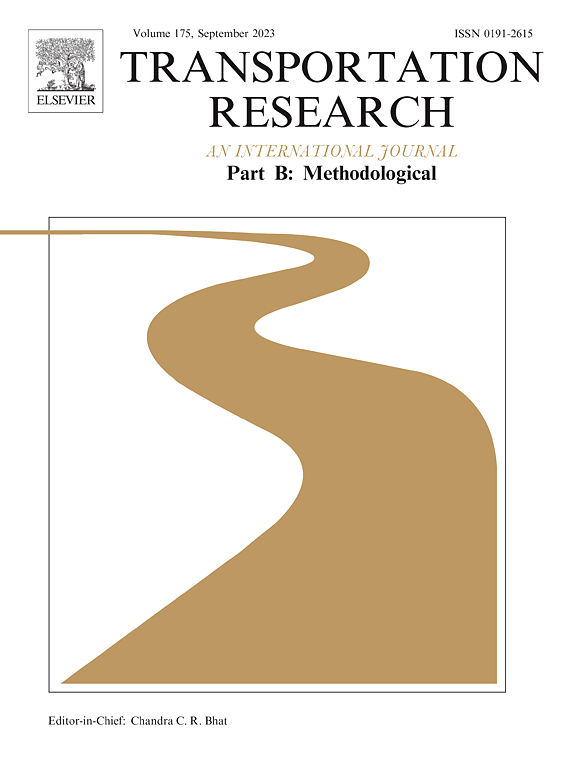Robust vessel traffic scheduling with uncertain Berth Service Times in a Seaport
IF 6.3
1区 工程技术
Q1 ECONOMICS
引用次数: 0
Abstract
We consider a planning horizon during which a set of vessels visit a seaport for cargo transshipment. To access the designated berths, vessels should travel from the anchorage ground to the port basin by passing through a navigation channel. As soon as the vessels have completed the cargo transshipment, they need to travel from the port basin back to the anchorage ground through the navigation channel again. Navigation channel traffic is affected by the tidal effect and is bottlenecked by the limited capacity. The incoming vessels may wait for the tide to enter the channel after arriving at the anchorage ground; while the outgoing vessels need to wait for the tide to enter the channel upon completion of cargo transshipment. During these operations, the port operators need to assign tidal windows for vessels to travel into or out of the port, as well as the berthing and unberthing times of vessels, in order to minimize the overall operating cost. We formulate the problem as a two-stage robust optimization model, considering the uncertain vessel service times at berths. By exploiting the problem structure, we develop an adapted column and constraint generation algorithm framework, where the second-stage problem is solved by an enumeration-based method for generating candidate vessel service sequences and a dynamic programming algorithm for allocating the uncertainty budgets to vessels. The computation experiments show that our proposed algorithm generates optimal solutions within acceptable computation times (less than 30 s), and performs better than well established benchmark methods in terms of both worst-case performance and mean performance metrics. Several managerial insights can be derived from our experimental results to guide port operations in terms of the application of the robust models and benefits to the industry.
海港泊位服务时间不确定的鲁棒船舶交通调度
我们考虑一个规划范围,在此期间,一组船只访问海港进行货物转运。船舶进入指定泊位,应当从锚地经航道进入港池。船舶一旦完成货物转运,就需要再次从港盆通过航道驶回锚地。航道交通受潮汐效应的影响,又因容量有限而成为瓶颈。进入航道的船舶到达锚地后,可以等待潮水进入航道;而出港船只在完成货物转运后,则需要等待潮水进入航道。在这些操作中,港口运营商需要为船舶分配进出港口的潮汐窗口,以及船舶的停泊和离港时间,以最大限度地降低总体运营成本。考虑泊位船舶服务时间的不确定性,将该问题表述为两阶段鲁棒优化模型。通过利用问题结构,我们开发了一种适用的列和约束生成算法框架,其中第二阶段问题通过基于枚举的方法生成候选船舶服务序列和动态规划算法分配不确定性预算来解决。计算实验表明,我们提出的算法在可接受的计算时间内(小于30秒)产生最优解,并且在最坏情况性能和平均性能指标方面都优于现有的基准方法。从我们的实验结果中可以得出一些管理见解,以指导港口在应用稳健模型方面的操作,并为行业带来好处。
本文章由计算机程序翻译,如有差异,请以英文原文为准。
求助全文
约1分钟内获得全文
求助全文
来源期刊
CiteScore
12.40
自引率
8.80%
发文量
143
审稿时长
14.1 weeks
期刊介绍:
Transportation Research: Part B publishes papers on all methodological aspects of the subject, particularly those that require mathematical analysis. The general theme of the journal is the development and solution of problems that are adequately motivated to deal with important aspects of the design and/or analysis of transportation systems. Areas covered include: traffic flow; design and analysis of transportation networks; control and scheduling; optimization; queuing theory; logistics; supply chains; development and application of statistical, econometric and mathematical models to address transportation problems; cost models; pricing and/or investment; traveler or shipper behavior; cost-benefit methodologies.

 求助内容:
求助内容: 应助结果提醒方式:
应助结果提醒方式:


